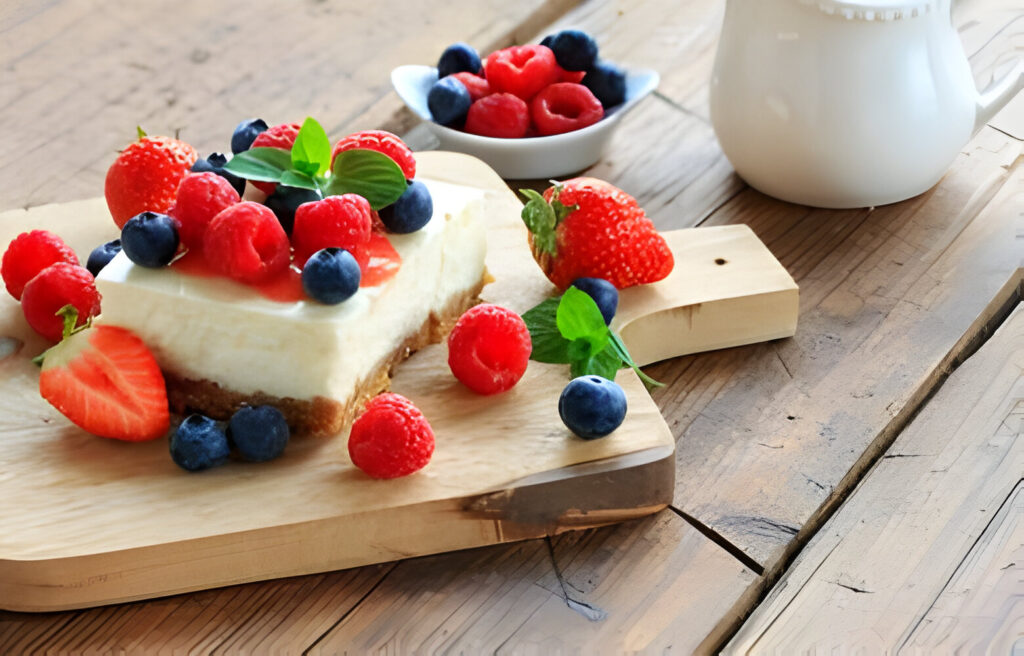|
Listen to article
Getting your Trinity Audio player ready...
|
Cheesecake which can be melted in your mouth and has a rich taste, is a whole meal for everybody. That’s how it happens: amidst all the joy and excitement, you turn on the oven, bake for the allotted time, and then pull out the oven sorely disappointed that the cheesecake has sunken in the middle.
If by the hands of inexperienced cooks you have encountered this gastronomic fail, don’t worry, you don’t alias. In this article, we’ll overview the most frequently encountered reasons to ” why does my cheesecake sink” that ultimately turn out unsuccessful and present to you some proven tips to keep that from happening.
Contents
Why does my cheesecake sink
Before we get into why sinks happens to cheesecakes, it is crucial to know the science first that is behind this “brilliant” creation of a cake. The cheesecake is a very complex sweet; the cheese is the most important ingredient, and it has to be perfectly arranged also with eggs as a binding agent, sugar and the flavorings.
It’s the synergy of these ingredients that makes combination works and set up while making the bread baking process. Nonetheless, there are different issues which floor the perfect balance in this case that may cause the cake to drop thus appearing like a sunken one.
Lets dive in the details.
Overmixing the Batter:
This part is really important. One of the leading reasons for your cheesecake to drop is excessively mixing the dough is the main one. Air when beaten stiffly takes the cake from a tender and light one, becomes heavy and spongy. Such bubbles might expand and even the muffin can rise too fast and it may show an opposite effect during cooling.
Solution: Stir the batter carefully by hand so as to not stir it too much or over-mix. Settle on a low-speed mode, frequently scraping the sides of the bowl, until all the ingredients are meticulously combined. Besides, avoid adding air in the process.
Incorrect Oven Temperature:
Another important point that you should consider is incorrect oven temperature. Preparing cheesecake (and most baked goods) is a science, which is why the oven temperature is a critical component in the final product. Quick changes in temperature will provoke your cakes to become unevenly baked or will sink on the center.
Solution: Buy these oven thermometer to be sure the temperature is accurate. Make sure your cheesecake goes to a properly preheated oven beforehand, and keep the oven tightly closed while baking process is going on.

Under baking or Overbaking:
The amount of time it takes in the oven is also significant. The biggest problem can be when the cheesecake does not get baked properly. The middle part may not be set, thus it could fall. On the other hand, the possibility of burning the cheesecake that results from overbaking is clear. A burnt and cracked cheesecake is exactly what may happen.
Solution: Carry out recipe directions by measuring baking time and use toothpick test as an indicator. Hold the toothpick at the center of the cake and pull it out, and if a few moist crumbs remain attached to the toothpick, the cake is not ready yet. However, if the crumbs are barely holding on and/or nothing sticks to the toothpick, the cake is ready to be removed from the oven now.
Cooling Too Quickly:
The oven temperature variation, which can arouse by a swift temperature swing, can throw the baked cheesecake out of form. Letting a baked cheesecake get chilled or placed in an area with a drafty environment will result in cracking.
Solution: After removing the cheesecake from the oven, leave it to cool gradually in the oven with the door left open. Then, just put it in the fridge to keep it cold for a while.
Ingredients at Room Temperature:
Extra-cold components including cream cheese, eggs and others can cause bumps and lumps on your cheesecake. Also, they may make your cheesecake hard to cut and creamy inside without the bubbles.
Solution: The eggs and cream cheese being pulled out of the fridge for about half an hour before they are added to the batter will also slightly increase its volume during the bake. This results in such an even-tasting puree.
You may also want to read
How much does it cost to make a cheesecake
What is a French style cheesecake
What does sour cream do in cheesecake
FAQs
Lets discuss some important FAQs related to why does my cheesecake sink.
Why did it fall in the middle of the cheesecake?
The number one goal of a non baking cheesecake wedding cake is to prevent it from sinking and there are many reasons why that may happen but one popular cause of sinking cheesecake is overmixing of the cake batter. Overt amalgamation is characterized by fouling up the air and its expansion when cooling, further cause collapsing.
Can incorrect temperature lead to the failure?
The answer is “Yes”.
Absolutely. Incorrect temperature of the oven and the quick changes or frequent opening of door can result in cake getting cooked unevenly, and hence, the center of your cheesecake sinks because of inaccurate temperature of your oven and the fast changes or excessive opening of the door. Be sure that you have well preheated your oven before putting the cake in, and try to keep the temperature settings accurate all the way through the baking stage.
What are the ways of ensuring that my cheesecake does not turn out to be under-baked or over-baked?
Enquire your recipe for the ideal baking time and check it with toothpick. A cheesecake that has been properly baked should be sufficiently moist so that when it is checked with the toothpick, it has small crumbs attached to it. It guarantees a pleasingly smooth texture in the cookie without overbaking or undercooking it.
Why should you allow your ingredients to be at room temperature before beginning anything?
Room temperature substances, namely cream cheese and eggs, can deflect the blending technique, as well as the texture of your cheesecake. Keeping in mind this aspect that the key ingredients should be brought to room temperature before being blended provides a composed mix and a better outcome.
Excluding under mixing, what other aspect could result in a sinking cheesecake during the cooking process?
Overmixing will not only give the cheesecakes too much air where pastry cream rises as it bakes and collapses as it cools, but also the cake will get not so smooth cake texture. Ensure that you mix the batter until it is fully combined but without over-mixing to avoid an unevenly cooked cake.
How can I avoid a sinking cheesecake while still incorporating fruits?
To include fruits without compromising the texture, gently fold them into the batter. Additionally, pat dry any fruits that may release excess moisture before adding them, ensuring a delicious and structurally sound cheesecake. Read More.
Conclusion:
Lets conclude our article. While a sinking cheesecake can be disheartening, understanding the potential culprits and implementing simple solutions can elevate your baking game. By paying attention to mixing techniques, oven temperature, baking time, and cooling methods, you can ensure your cheesecake stays tall, creamy, and utterly delightful. Remember, a perfectly baked cheesecake is a skill that develops with practice, so don’t be discouraged if it doesn’t come out flawlessly on your first attempt.
I hope you got the answer of “why does my cheesecake sink” .Happy baking!


